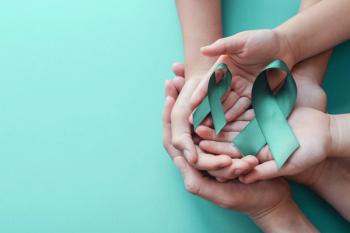
Coping strategies found to impact quality of life in endometriosis
A new study found that the severity of pelvic pain in patients with endometriosis affects health-related quality of life through the influence of coping mechanisms.
Illness representations and coping strategies influence the link between pelvic pain severity and health-related quality of life (HRQOL) in patients with endometriosis, according to a recent study published in the American Journal of Obstetrics & Gynecology.1
Chronic pelvic pain, defined as pain lasting at least 3 to 6 months, is a common symptom in women with endometriosis, significantly impacting their HRQOL. This often leads to decreased work productivity, impaired relationships, and additional adverse outcomes.2
“The relationship between endometriosis and pain is complex and remains not yet fully understood,” wrote investigators.1 “In most cases, the severity and presence of symptoms do not correlate with the extent of the lesions, and symptoms often recur after treatment, even in the absence of lesions, further complicating our understanding of the disease.”
Using the common-sense model to examine coping and HRQOL
The common-sense model of illness self-regulation (CSM) hypothesizes a dynamic interplay of psychosocial factors influencing an individual’s adjustment to illness. Therefore, investigators conducted a cross-sectional study to assess the link between pelvic pain severity and HRQOL through a CSM lens.
Participants included women aged at least 18 years diagnosed with endometriosis. These patients self-reported information through an online questionnaire. Those with pregnancy or lacking an endometriosis diagnosis by a health care professional were excluded from the analysis.
Relevant data included age, education level, marital status, nationality, parity, weight, height, hormonal therapy, and medication-induced amenorrhea. Endometriosis information, such as type of endometriosis, diagnostic delay, and prior surgeries, was also obtained.
Assessing pain and illness perception
A numerical rating scale was used to evaluate pelvic pain intensity on a 10 mm numerical line. The scale measured pain in the past 3 months, with one side representing no pain and the other representing the worst pain imaginable. The 8-item Brief Illness Perception Questionnaire assessed illness perceptions.
Questionnaire responses were rated on an 11-point Likert scale, with a higher score indicating greater agreement. The sum of all responses was calculated to determine the total score.
The Chronic Pain Coping Inventory and Pain Catastrophizing Scale were used to measure coping strategies, while the Endometriosis Health Profile was used to determine HRQOL. The latter scale included 5 domains: pain, control, emotions, social support, and self-image.
Diagnostic delay, pain severity, and coping
There were 273 women aged a mean 35.3 years included in the final analysis, 97.1% of whom were White and 61.2% were employed. Ovarian endometriosis was reported in 36%, deep infiltrated endometriosis in 44.6%, and both in 19.3%.
A mean duration of 11.4 years was reported between symptom onset and diagnosis. Surgery for endometriosis was reported in 61.2% of patients and the use of hormonal medication in 71.4%. Diagnostic delay was significantly linked to body mass index (BMI) and HRQOL, while a significant inverse association was reported between severity of pelvic pain and BMI.
Associations were reported for pelvic pain severity with illness representations and HRQOL, with β values of 0.44 and 0.21, respectively. Additional associations were reported for negative illness perceptions with pain catastrophizing and illness-focused coping, with β values of 0.63 and 0.36, respectively.
Targeting perceptions
HRQOL was also impacted by pain catastrophizing, illness-focused strategies, and illness representations. These links were consistent with the CSM, highlighting a significant role of illness representations and cognitive coping strategies in the link between pelvic pain severity in HRQOL.
“Accordingly, future research should explore experimental interventions aimed at modifying illness representations or coping strategies and evaluate their impact on health outcomes in women with endometriosis,” wrote investigators.
References
- Spinoni M, Capano AU, Porpora MG, Grano C. Understanding the psychological factors linking pelvic pain and health-related quality of life in endometriosis: the influence of illness representations and coping strategies. Am J Obstet Gynecol 2025;233(1):54.e1-54.e10. doi:10.1016/j.ajog.2024.12.027
- Quinlivan J, Lambregtse-van den Berg M. Managing the stigma and women's physical and emotional cost of endometriosis. J Psychosom Obstet Gynaecol. 2021;42(1):1-2. doi:10.1080/0167482X.2021.1883218
Newsletter
Get the latest clinical updates, case studies, and expert commentary in obstetric and gynecologic care. Sign up now to stay informed.










